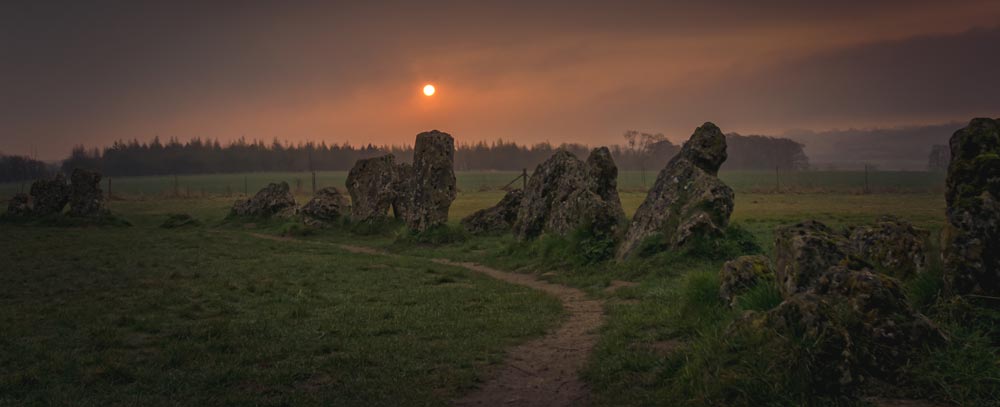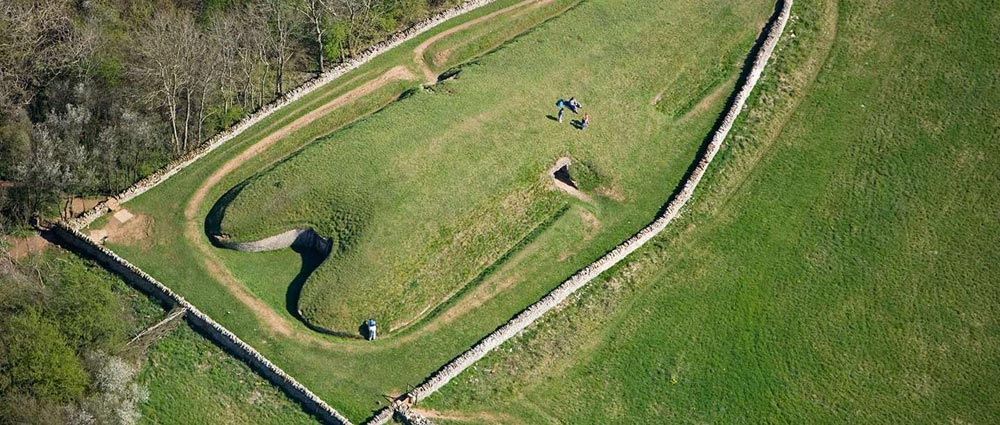For most of us school history was stuffed full of Tudors and Victorians with a sprinkling of Normans, civil wars and maybe the odd Roman thrown into the mix.
But what about the thousands of years before Roman roads and villas spread across the landscape – the murky world of prehistoric Britain?
Archaeologists and TimeTeam addicts apart, terms like stone age, bronze age and iron age really just conjure up images of mysterious lumps and bumps across the Cotswold countryside with a scattering of intriguing standing stones.
Discover some of the best in the Cotswolds…

The Rollright Stones
Set in a secluded clearing behind a tree-lined chalk ridge just north of Chipping Norton, lies an ancient stone circle of some 70 standing stones – an atmosphere of quiet mystery. These are the King’s Men.
Just across the road, a short climb brings you to a single large standing stone known as the King’s Stone and little further away along a footpath another group of large stones lean drunkenly together - the Whispering Knights.
The legend goes that a king and his army were marching over the Cotswolds when they met a witch, who addressed the king...
"Seven long strides thou shalt take, and
If Long Compton thou canst see
King of England shalt thou be"
The king strode forward, but on his seventh stride the ground rose up in a long mound obscuring the view of the village below. The witch turned them all to stone: the king alone, his men standing in a circle nearby, and his knights whispering treachery further off.

Belas Knap
Belas Knap is a spectacular stone age tomb – a Neolithic long barrow - lying just below the crest of a hill. From here the superb views, which nowadays feature Winchcombe and Sudeley Castle, explain why 5,000 years ago some Stone Age Briton chose it as the ideal spot to spend eternity.
The northern end of the barrow is curved, with projecting 'horns' to create what appears to be a grand ceremonial entrance – in fact this is not a real entrance at all: the four burial chambers have separate entrances on the other sides of the mound.
Painswick Beacon
Also known as ‘Painswick Hill Camp’, ‘Kimsbury Hillfort’ and ‘Castle Godwyn’, Painswick Beacon is made up of lots of bumps and humps – or more pedantically it is a large multivallate Iron Age hill fort!
Sitting on the top of a prominent hill at the junction of three valleys this was a great place for defence – and survives as a roughly triangular enclosed area with banks and a natural scarp to keep out any enemies.
During the Civil War, while his army was besieging Gloucester, King Charles is supposed to have climbed up to the Beacon and, seeing the beautiful valley below, to have said "This must be Paradise". Since then that valley, and the hamlet on its western side, have been called Paradise.
Three Shires Stones
Drive too fast and you’ll miss the Three Shires Stones, which sit right beside the Fosse Way, where Gloucestershire, Wiltshire and Somerset meet. Nobody knows where the stones came from – this isn’t their original location – so it should really be called a ‘folly’.
The upright stones are about 2 metres tall with a capstone – a stone across the top – of about the same size and apparently, when the hole was dug for the ‘Gloucestershire’ stone, three skeletons were found along with a James II coin. The ‘ Lord of the Rings’ author, JRR Tolkein certainly knew this area and he may have used them as the model for the Three Farthings Stone in the Shire of Middle Earth.
Hetty Peglers Tump
Also known rather less exotically as Uley Long Barrow, this Neolithic tump (very similair to a lump) is set right on the edge of the Cotswold escarpment with views over the Severn valley. The burial mound here is some 37 metres long and 3 metres high at its highest point with three large stones – two standing and one across as a lintel – forming the entrance into the burial chamber where archaeologists found some 15 skeletons.
If you find you're getting addicted to stone age lump spotting - or the wonderful 'eternity views' - then don't worry there's another just a mile awa: Nympsfield Long Barrow!
Related
Comments
Comments are disabled for this post.


 to add an item to your Itinerary basket.
to add an item to your Itinerary basket.









